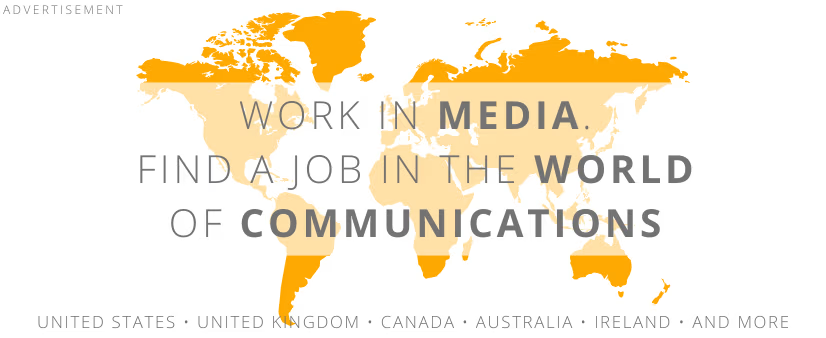 illustration: bing.com/create
illustration: bing.com/createThe term "yellow press" was first used in the United States in 1896 to describe the competition between two New York newspapers: Joseph Pulitzer`s New York World and William Randolph Hearst`s New York Journal. Both newspapers competed for the highest circulation by using increasingly sensational and scandalous methods. The name "yellow press" originated from the yellow comic strip associated with the character The Yellow Kid, which appeared in both publications.
One of the most notable examples of yellow journalism from that time was the story of the sinking of the Spanish cruiser "Maine" in 1898. Hearst and Pulitzer falsely accused Spain of sinking the ship, which contributed to the outbreak of the Spanish-American War.
Distinctive Features of Yellow Press
Also known as "penny press," yellow journalism is characterized by the following features:
- Focus on Sensation: Yellow press focuses on shocking, surprising, or unexpected events, often using headlines and illustrations designed to grab readers` attention.
- Superficiality: Yellow press often addresses complex topics in a superficial and simplified way, disregarding objectivity and accuracy.
- Emotions: Yellow press aims to evoke strong emotions in readers, such as fear, anger, or admiration.
Several factors contribute to the popularity of yellow press, including human curiosity that drives us to read about shocking and unexpected events, and the availability of information that makes it easier to find stories of interest.
Yellow press is popular in many countries. Examples include:
- In the United States: "The New York Post," "National Enquirer"
- In the United Kingdom: "The Sun," "Daily Mail"
- In Germany: "Bild," "RTL Aktuell."
Impact of Yellow Press on Society
Yellow press can have both positive and negative impacts on society. On one hand, it can raise public awareness on important issues. On the other, it can spread misinformation and contribute to societal polarization.
Positive effects of yellow press include:
- Raising Social Awareness: Yellow press can help raise awareness on important topics, such as social issues, politics, and culture.
- Promoting Democracy: Yellow press can support democracy by monitoring power and informing the public about significant events.
Negative effects of yellow press include:
- Spreading Misinformation: Yellow press can spread misinformation by disseminating false or unverified information.
- Polarizing Society: Yellow press can polarize society by promoting extremism and antagonism between different social groups.
Yellow journalism can be found in various media, such as print, television, radio, and online. Examples of yellow journalism practices include:
- Clickbait Headlines designed to attract readers` attention, even if they don`t match the article’s content.
- Spreading Gossip and Sensationalism without factual support.
- Using Unethical Journalism Practices, such as spying or blackmail.
Controversies and Popularity
In addition to newspapers, yellow journalism is also popular in other media, such as television, radio, and the internet. News programs and talk shows often focus on scandals and sensational topics. On the internet, news portals frequently publish articles on yellow press themes.
Yellow press and yellow journalism are terms that provoke much controversy. On one hand, they can be seen as a form of freedom of speech, allowing important topics to be discussed in a way that attracts readers’ attention. On the other hand, yellow press is criticized for spreading misinformation and polarizing society.
COMMERCIAL BREAK
New articles in section Media industry
Advertising market 2025. Poland, Europe and the World
Marcin Grządka
The global advertising market is growing by 8.8% in 2025 and will reach a value of 1.14 trillion dollars. The industry result in Europe records slightly lower dynamics, at the level of 5.8%. In this comparison, Poland performs clearly above the average. We will record an increase of 8.9% this year and a value of 18.56 billion PLN - estimates WPP Media in the annual report "This Year Next Year".
The print media market 2025. Three global trends
Krzysztof Fiedorek
The market value is 359.53 billion dollars, yet the erosion is visible to the naked eye. The decline for newspapers will amount to -2.3 percent. Despite this, print retains strength: it generates 76 percent of subscription revenues and enjoys 82 percent consumer trust. The future of the industry is defined by hybrid strategies and niche specialization.
Journalism in the age of AI. Why people prefer humans over machines
Krzysztof Fiedorek
Only 12% of people accept news created solely by AI, while 62% prefer those written by humans. At the same time, only 19% notice labels indicating the use of artificial intelligence, while younger audiences ask AI to explain the content to them. These are the findings of the Reuters Institute report on artificial intelligence in media.
See articles on a similar topic:
Zero-click search 2025. The even bigger end of clicking in search engines
Bartłomiej Dwornik
Google is giving up its role as a web signpost. More and more, it wants to be the destination of the whole journey. ChatGPT and Perplexity are hot on its heels, changing the rules of the search game. AI Overviews is a card from the same deck. Only content creators are losing ground in this race.
Hate speech is contagious and leads to harm [EXPERT OPINION]
Karolina Kropiwiec
‘If we are in an environment where certain groups of people are insulted, there is a high probability that we will start using such language ourselves; hate speech is contagious and its consequence is someone's harm,’ says Dr. Michał Bilewicz from the Centre for Research on Prejudice at the University of Warsaw.
Gen Alpha avoids tough topics. What young people are really looking for
Krzysztof Fiedorek
Generation Alpha prefers humor in 46% of cases, while only 12% are interested in news and political topics. Young people and children consciously limit what negatively affects their emotions - according to the report "Gen Alpha Unfiltered" published by GWI.
Cyberviolence and hate disguised as a joke. The RAYUELA report on youth
Krzysztof Fiedorek
The study conducted in five countries reveals a harsh truth. Online violence is not evenly distributed. It is a digital map of prejudice that hurts the most those who stand out the most. "It’s just a joke." That’s how violence often begins. Young people go through it in silence.





























